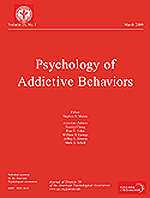Low sensitivity to the acute effects of alcohol is a known risk factor for alcoholism. However, little is known concerning potential information-processing routes by which this risk factor might contribute to increased drinking.
We tested the hypothesis that low-sensitivity (LS) participants would show biased attention to alcohol cues, compared with their high-sensitivity (HS) counterparts.
Participants performed a task in which alcoholic and nonalcoholic beverage cues were presented bilaterally followed by a target that required categorization by color.
Response times were faster for targets appearing in alcohol-cued than non–alcohol-cued locations for LS but not for HS participants.
Event-related potential markers of early attention orienting (P1 amplitude) and subsequent attention reorienting (ipsilateral invalid negativity amplitude) indicated preferential selective attention to alcohol-cued locations among LS individuals.
Controlling for recent drinking and family history of alcoholism did not affect these patterns, except that among HS participants, relatively heavy recent drinking was associated with difficulty reorienting attention away from alcohol-cued locations.
These findings suggest a potential information-processing bias through which low sensitivity could lead to heavy alcohol involvement.
